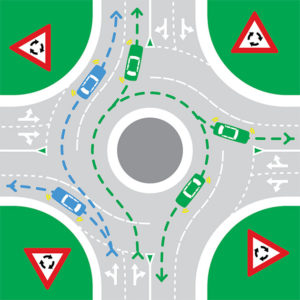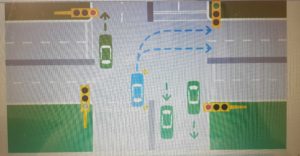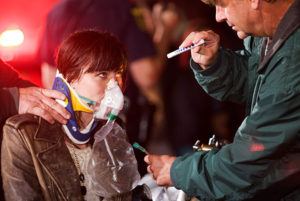Mobile Drug Testing
NSW Police can test drivers for drugs anytime or anywhere, there’s no escaping it.
Serious safety problem
Safe driving requires good judgement and sharp concentration. You also need to react quickly to changing situations on the road. Drug driving puts everyone on the road at risk. Our research shows that the presence of illegal drugs is involved in the same number of fatal crashes as drink driving.
Mobile Drug Testing (MDT) operates alongside RBT for alcohol and police also have the power to test drivers they believe may be under the influence of illegal or prescription drugs. MDT is increasing, with police conducting up to 200,000 roadside drug tests in NSW by the year 2020.
Our MDT campaign combined with enforcement is the best way to stop drivers who have used drugs from getting behind the wheel when they shouldn’t.
When you are stopped
MDT detects drivers who have recently used four common illegal drugs: ecstasy, cannabis, cocaine and methamphetamine (including speed and ice). MDT can be conducted at roadside operations along with RBT, or by NSW Police in vehicles patrolling our roads.
As with RBT, you will be stopped by police, asked for your licence, and complete a breath test for alcohol. You will then be asked to wipe an MDT test stick down your tongue to check if you have illegal drugs in your system. The results take a few minutes to appear and you must wait until police say you are in the clear. Most drivers test negative and are soon on the road again.
If your MDT test is positive, you’ll be taken to a roadside testing van or bus, or back to a police station to provide a saliva sample. This sample will also be tested and if positive, you’ll be banned from driving for 24 hours. All samples are sent to a laboratory for analysis. If the laboratory confirms the positive roadside result, police will contact you and charge you with driving with the presence of an illegal drug.
If you are stopped for MDT or other reasons at the roadside, your behaviour or driving is erratic and police suspect you are under the influence of illegal or prescription drugs, they can also require you to undergo blood and urine testing. The tests cover a large range of legal and illegal substances that can impair drivers and can lead to a charge of driving under the influence (DUI), which has serious penalties.
All drivers involved in fatal crashes undergo blood and urine testing for drugs and alcohol.
Consequences
Drivers caught with drugs in their system will face court, could lose their licence, be fined and end up with a criminal record. For a presence offence detected through an MDT, the court may impose a fine of up to $1,100 and an automatic six month licence disqualification.
Drivers proven to be driving under the influence of illegal or prescription drugs face fines of up to $3,300 and automatic three-year licence disqualification for a first offence. These offenders can also be sentenced to up to 18 months in prison. Higher penalties apply for second and subsequent offenders.
Don’t make a foolish decision
Illegal drugs can be detected in your saliva by an MDT for a significant time after drug use, even if you feel you are OK to drive. The length of time that illegal drugs can be detected by MDT depends on the amount taken, frequency of use of the drug, and other factors that vary between individuals. Cannabis can typically be detected in saliva by an MDT test stick for up to 12 hours after use. Stimulants can typically be detected for one to two days.
If you think that you may have illegal drugs in your system, the best decision is not to drive.
Protecting the community
From 2010 to 2016, 403 people died on our roads in crashes involving motorists with at least one of three illicit drugs – cannabis, methamphetamine (including speed and ice) or ecstasy – in their system.
Taking illegal drugs before driving puts you at greater risk of injuring or killing yourself, your friends or other innocent people. NSW Police are doing their job to keep you, your family and everyone else on our roads safe by carrying out MDT operations




